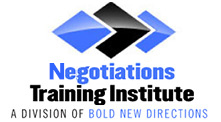A negotiation is much like a couple that has decided to build their dream home. They both agree that they want the house, but they each have their own ideas and visions of how the home should be designed. In order to reach an agreement, they are going to have to listen to each other’s wants and ideas and find common ground that will be mutually beneficial for both of them. In much the same way, negotiations require a framework in order to focus on the solution by eliminating all of the unnecessary clutter. By organizing information in a way that helps your counterpart understand what’s on the table, they can then make a more informed decision on what solutions will best suit their needs. When it comes to framing your negotiation, the following strategies can be helpful for you and your business.
Listen and Understand the Other Party’s Needs
When it comes to successful negotiations, it is far more advantageous to do more listening than talking. The best negotiators actively listen to the other side, understand their key issues and pain points, and then formulate an appropriate response. The more you listen, the more information you can gather about what is most important to your client and this can help you create a more effective framework.
Offer Fewer Choices
Research has shown that people actually respond better to fewer choices so this is an important finding to keep in mind when framing a negotiation. At first glance, it may seem appealing to have numerous options available, but in reality, consumers can become so overwhelmed by too many options that they cannot make a decision. When framing a negotiation, keep in mind that while your counterpart may want to see a few choices, they may get overwhelmed by too many.
Stress Gains Rather Than Losses
Imagine you are a manager and one of your employees has requested a pay raise to increase their salary from $100,000 to $150,000. Suppose you cannot pay the full $150,000 but you are willing to pay them $120,000. By suggesting that you can increase their current salary by $20,000, you are more likely to appeal to the employee than if you made the some offer of $120,000 but framed it as a $30,000 decrease from their request of $150,000. Stressing what the other party will gain rather than lose is an important technique in framing a negotiation the right way.
Present Several Offers
If you have prepared only one offer for your negotiation, you are going into the negotiation with an enormous amount of pressure to seal the deal. After all, everything is riding on this one offer. If the offer doesn’t suit the other party, the negotiation is deadlocked. Now, try presenting two or three equivalent packages with various terms. For example, you might offer a $1 million package with a payment in 30 days, a $1.5 million package with payment in 120 days, or a $1.3 million package with payment in 45 days. By presenting different offers, you are able to discover what priorities are more important to your client. In addition, one package might begin to look like a bargain when it’s next to another package. Known as the contrast effect, placing two offers next to each other can sometimes make one look far more appealing. This is a strategic move in framing a negotiation.
